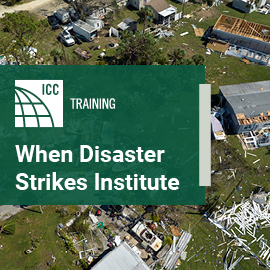
Why should the building safety and construction industry care about USMCA?
![]() The U.S.-Mexico Canada Agreement (USMCA), negotiated to replace NAFTA, officially entered into force on July 1. Most modern trade agreements contain a section about Technical Barriers to Trade (TBTs) that are consistent with WTO rules. USMCA also contains a chapter about Good Regulatory Practices (GRP) that aims to create a transparent enforcement infrastructure. When TBT and GRP chapters are robust in trade agreements, there are benefits for Standards Developing Organizations (SDOs) and Conformity Assessment Bodies (CABs). The provisions will not likely change SDO and CAB status and practice in the U.S., but they could create real opportunities for harmonization or mutual recognition in Canada and especially in Mexico.
The U.S.-Mexico Canada Agreement (USMCA), negotiated to replace NAFTA, officially entered into force on July 1. Most modern trade agreements contain a section about Technical Barriers to Trade (TBTs) that are consistent with WTO rules. USMCA also contains a chapter about Good Regulatory Practices (GRP) that aims to create a transparent enforcement infrastructure. When TBT and GRP chapters are robust in trade agreements, there are benefits for Standards Developing Organizations (SDOs) and Conformity Assessment Bodies (CABs). The provisions will not likely change SDO and CAB status and practice in the U.S., but they could create real opportunities for harmonization or mutual recognition in Canada and especially in Mexico.
The standards, conformity assessment and Good Regulatory Practices chapters of USMCA are a significant improvement over the original NAFTA, and the stronger language included in USMCA will be important as a basis for more favorable language in future bilateral and multilateral trade agreements. For example, the strong TBT language that was negotiated in the Trans-Pacific Partnership, which was never ratified by the U.S., nonetheless provided a baseline for the USMCA negotiations. Likewise, U.S. negotiators likely to reference the USMCA language in the discussions underway with the U.K., Kenya, and India.
For U.S. SDOs and CABs, opportunities are created by an opening of the standards development and conformity assessment activities to private sector, non-national entities. Currently, both Canada and Mexico defer to the use of national standards (if they exist) or “international standards” which are frequently limited to ISO standards. In the global context of standardization, most U.S.-developed international standards are considered to be “advanced national standards” rather than “international standards.” The USMCA language puts these U.S.-developed “advanced national standards” on the same level as “international standards” among the signatories, and even encourages the use of an existing standard from one of the signatory countries before work begins on the development of a new national standard. This promotes harmonization and removes barriers to trade.
In the area of conformity assessment, whereas accreditation is and will continue to be a government function in both Canada and Mexico, manufacturers should expect to have more private sector options for product evaluation. Opening the conformity assessment market to private sector and international participants should enable manufacturers of an even wider range of building products to work with the same product evaluator to certify product compliance with codes and standards in all three USMCA markets, as ICC-Evaluation Service is currently able to do for most categories of products.
The Good Regulatory Practices chapter of the USMCA requires ongoing engagement among the signatories to ensure transparency in the development and promulgation of standards, ensuring that a dialogue continues in the areas of standards development and conformity assessment.
U.S.-based building products manufacturers and standards developers should be encouraged by this increased harmonization and reciprocity in the area of standards to seek opportunities to access the construction sectors in Canada and Mexico. U.S.-based conformity assessment groups like ICC-Evaluation Service and the International Accreditation Service are here to help.







